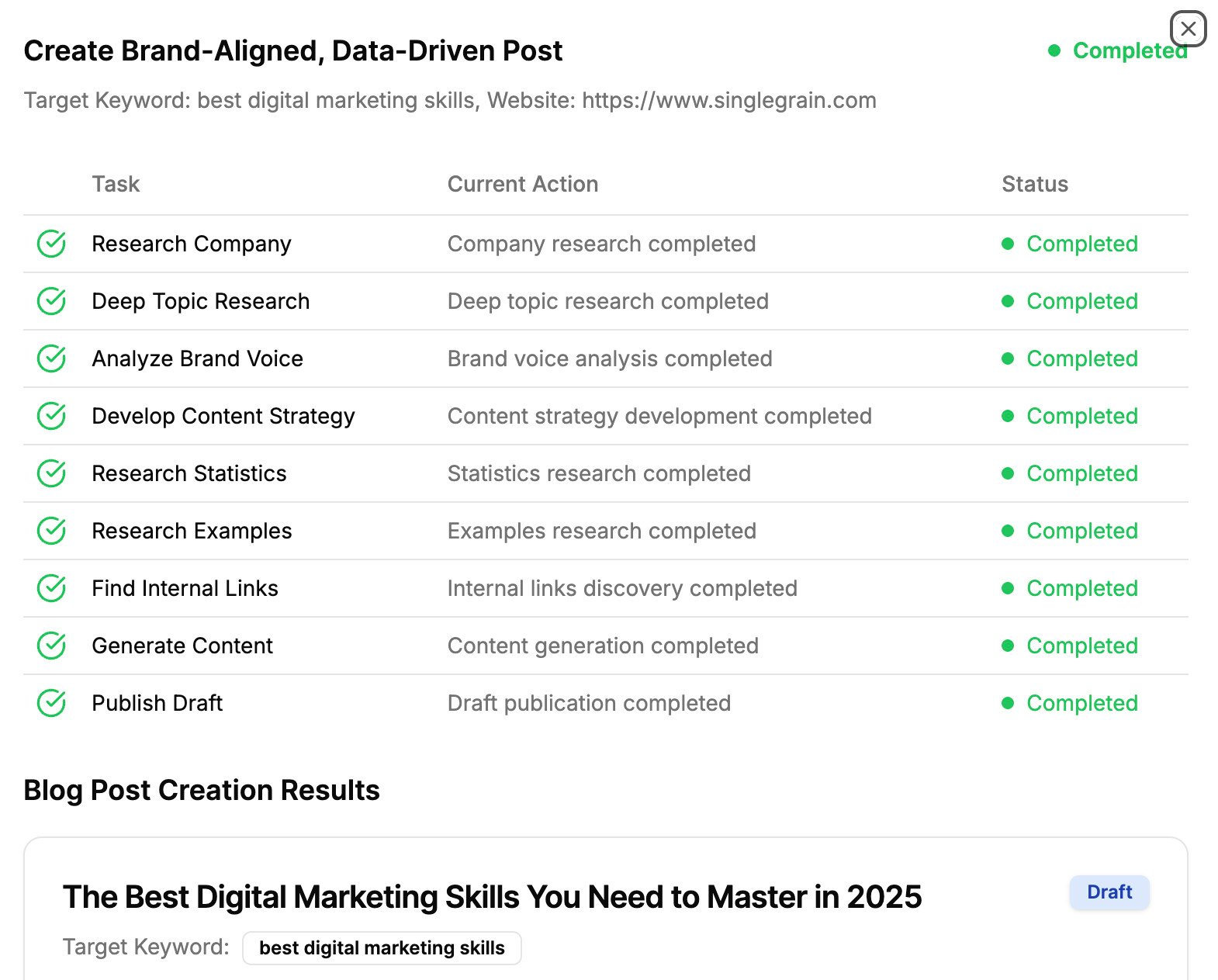The B2B arena is getting increasingly competitive. As a B2B marketer, you have little margin for error in your marketing efforts if you wish to make your brand stand out and keep its competitive edge.
Couple this with the fact that nearly a third of B2B companies allocate just 5% of their organization’s total budget towards marketing:
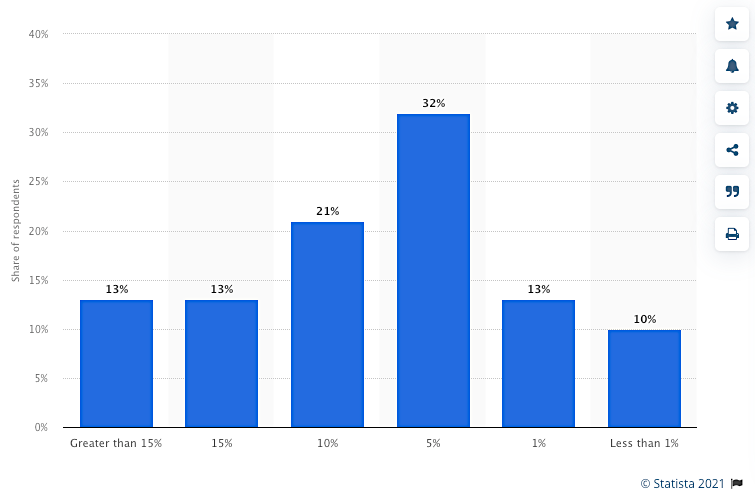
The last thing you want is to waste your shoestring marketing budget on making mistakes.
In this post, I’ll list the top B2B marketing mistakes many marketers unwittingly make that are costing their company some serious money — and how to fix them.
TABLE OF CONTENTS:
Top B2B Marketing Mistakes to Avoid in 2025
Here are fifteen amazingly common yet oh-so-costly B2B marketing mistakes you need to avoid.
1) Using Excessive Jargon
When you specifically talk about business-to-business marketing, you may think using jargon freely in your digital marketing collateral — such as blog posts, lead magnets (e-books, white papers, etc.), landing pages, email newsletters, etc. — is all well and good.
Sure, in the right context and to some extent using jargon is reasonable and necessary. It shows that your company is knowledgeable in its niche and knows its stuff. People who don’t really know what they’re talking about tend to use vague and general wording. So using specialized language helps exude brand authority and may even help you rank for specific keywords.
But using too much jargon can put off your audience as they may have a hard time understanding what you’re saying, or your content might overwhelm them rather than help them.
The Fix: Take the time to get to know your target audience and write content or copy accordingly. When you research your audience well, you can tailor your writing to better resonate with them. In other words, write the way they write.
Always keep your prospects’ level of understanding and knowledge about your niche in mind, and then deliver information using words that are relevant and easy to understand.
Book My Free B2B Marketing Consultation
2) Making It all about Your Company
This is another huge copywriting-related marketing mistake that’s fairly rampant in the B2B space.
Many B2B marketers focus heavily on boasting about how great their product or service is. While it’s obviously a big boon to have a superior product or service…
Your prospects don’t want to hear about your greatness. They want to know what’s in it for them.
How does your offering provide value, solve their problem or make their company more money? Do you offer a free, feature-rich trial? These are the questions they care about when they visit your business website.
So if your marketing copy is full of phrases like “our service is the best in the industry and better than everyone else” rather than “our tools help you streamline internal workflows, send invoices with ease, and improve your teams’ productivity,” you’re making a huge B2B marketing mistake.
The Fix: Again, it’s all about audience research and shifting your focus. Look at your website and its copy from the audience’s perspective. Pretend you know nothing about your product as you read the site descriptions. Are you addressing the user’s pain points? If not, revise your text to prove to your visitors how your business benefits them.
Check out Ahrefs’ homepage title to see how it’s done:

3) Not Using Responsive Design
Mobile accounts for over 92.3% of internet usage worldwide. By 2025, there will likely be over 1 billion connections via 5G.
Plus, Google’s mobile-first indexing means the mobile (not the desktop) version of your website is the benchmark for how Google indexes your website and determines your rankings. What’s more, 79% of people say they’re more likely to revisit and share a mobile site if it is easy to use:

So not using a responsive design — which enables you to deliver the same content that adjusts to the user’s device size and shape — is a dire mistake that’ll seriously hurt your site’s user experience and rankings.
The Fix: Prioritize the mobile experience — which means using a responsive design. Furthermore, here are a few best practices to ensure a mobile-friendly experience:
- Minimize the amount of typing needed by merging multiple form fields into a single field, allowing autofill wherever possible, and the option to connect existing accounts (like Facebook, Google or Twitter) as opposed to signing up from scratch.
- Ensure optimal mobile site speed by compressing images, minifying the code, avoiding unnecessary redirects, and enabling browser caching and compression.
- Ditch the navbar and opt for a hamburger menu, which turns your space-hungry navbar into an expandable menu.
- Optimize your content layout for the “thumb zone,” which is the easy-to-reach area of the screen using the thumb while holding the device with one hand:
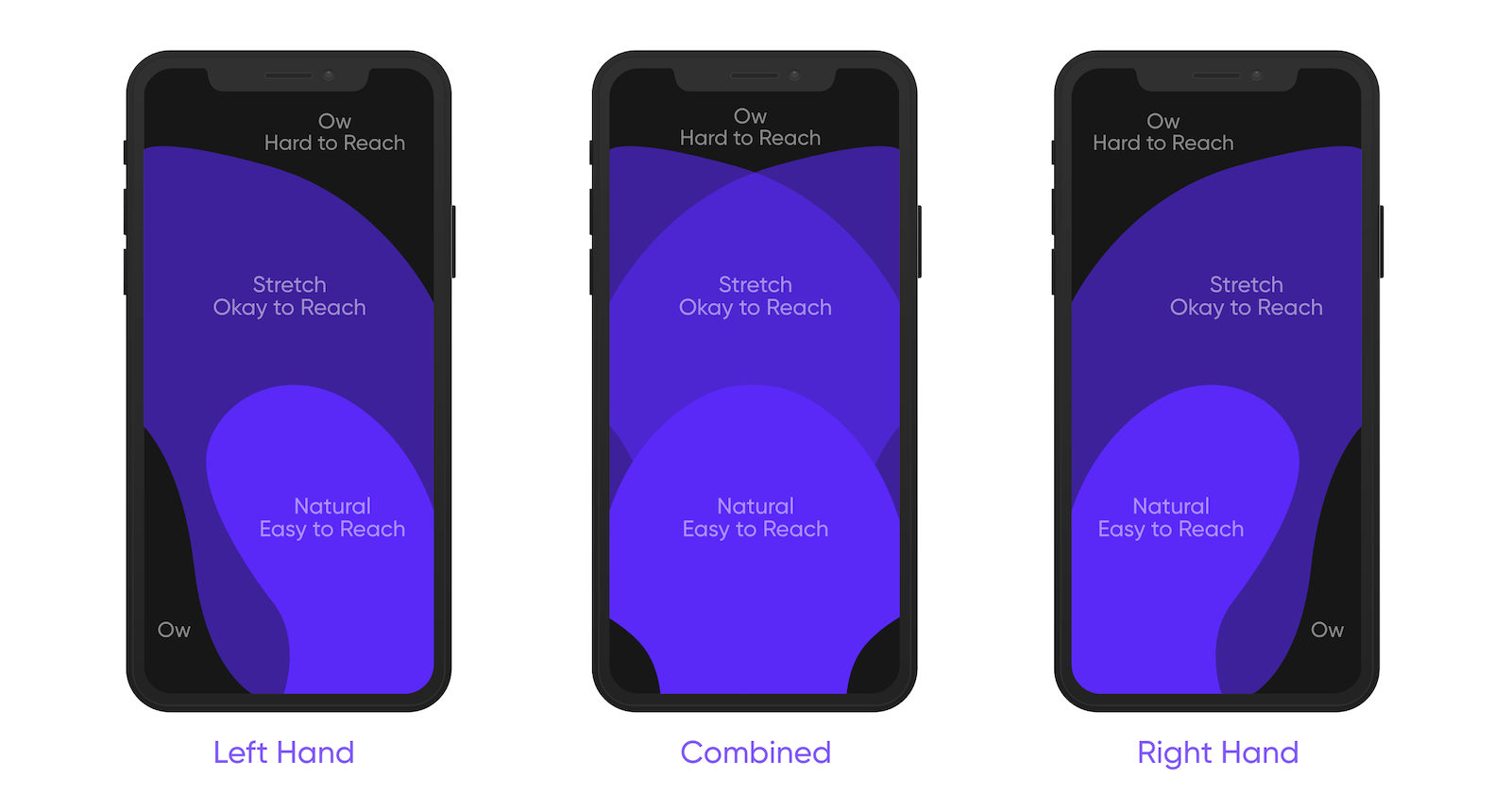
4) Forgetting to Run Split Tests for Improvement
How do you improve something? By testing it and analyzing the results. The same applies to B2B marketing.
For instance, the first draft of your landing page copy is usually never the best-performing one. If you test a few versions of the copy over a couple weeks, you’ll likely reach a variation that converts much higher than the original.
Split testing isn’t just useful for landing pages. It’s essential for driving better results in various aspects of all your marketing campaigns, including but not limited to:
- SEO elements like title tags and meta descriptions
- Social media captions and formats
- Email subject lines, copy and visuals
- Ad copy and visuals
- CTA buttons
The Fix: Keep split testing the critical areas of your campaigns. Evaluate whether the new version converts better (and why). It’s the only way you can turn so-so results into incredible results.
If you’re wondering, “where do I even begin?” here’s the PIE framework to prioritize which pages to test and in which order:
- Potential: What’s the potential for a conversion rate bump on the page? Consider prioritizing your worst performers.
- Importance: How valuable is the traffic to this page? Consider pages with the most volume and the costliest traffic.
- Ease: How difficult will it be to implement a test on this page or template? The lesser time and effort you need to invest for equivalent returns, the better.
5) Not Leveraging Calls to Action (CTA)
If you haven’t placed calls to action buttons on your site or landing pages, it’s kind of like going on a date with someone and then at the end just sort of quietly walking away instead of clearly asking them for a second date. If you don’t ask, they may just shrug their shoulders and walk away, too.
On the other hand, maybe you are using calls to action everywhere — on your website, social media captions, landing pages, and so on. But are your CTAs doing the job?
Essentially, CTAs provide your audience with a clear direction to the next step once they’re done consuming your content. They lead your audience to the next stage of the buyer’s journey.
Whether a visitor is browsing your website or looking at your social media ad, you want to leverage carefully crafted CTAs to guide them to take specific actions and eventually turn them into leads for your brand.
The Fix: Create calls to action that clearly guide your audience. Here are a few best practices to craft high-converting CTAs:
- Ensure that the CTA button stands out from other elements and is instantly visible.
- Have some negative space around the button so you don’t crowd it and confuse the site visitor.
- Use a color that aligns with your branding and contrasts with the rest of the page.
- Rather than vague CTA copy like “Click Here” or “Submit,” go for descriptive, benefit-oriented copy with action verbs like “Get Your Free Guide” or “Start Your Free Trial.”
See the orange CTA button in the Ahrefs’ example in #2 above? The color, copy and size of the CTA are all done right. Slack is another excellent example of elegant CTAs:
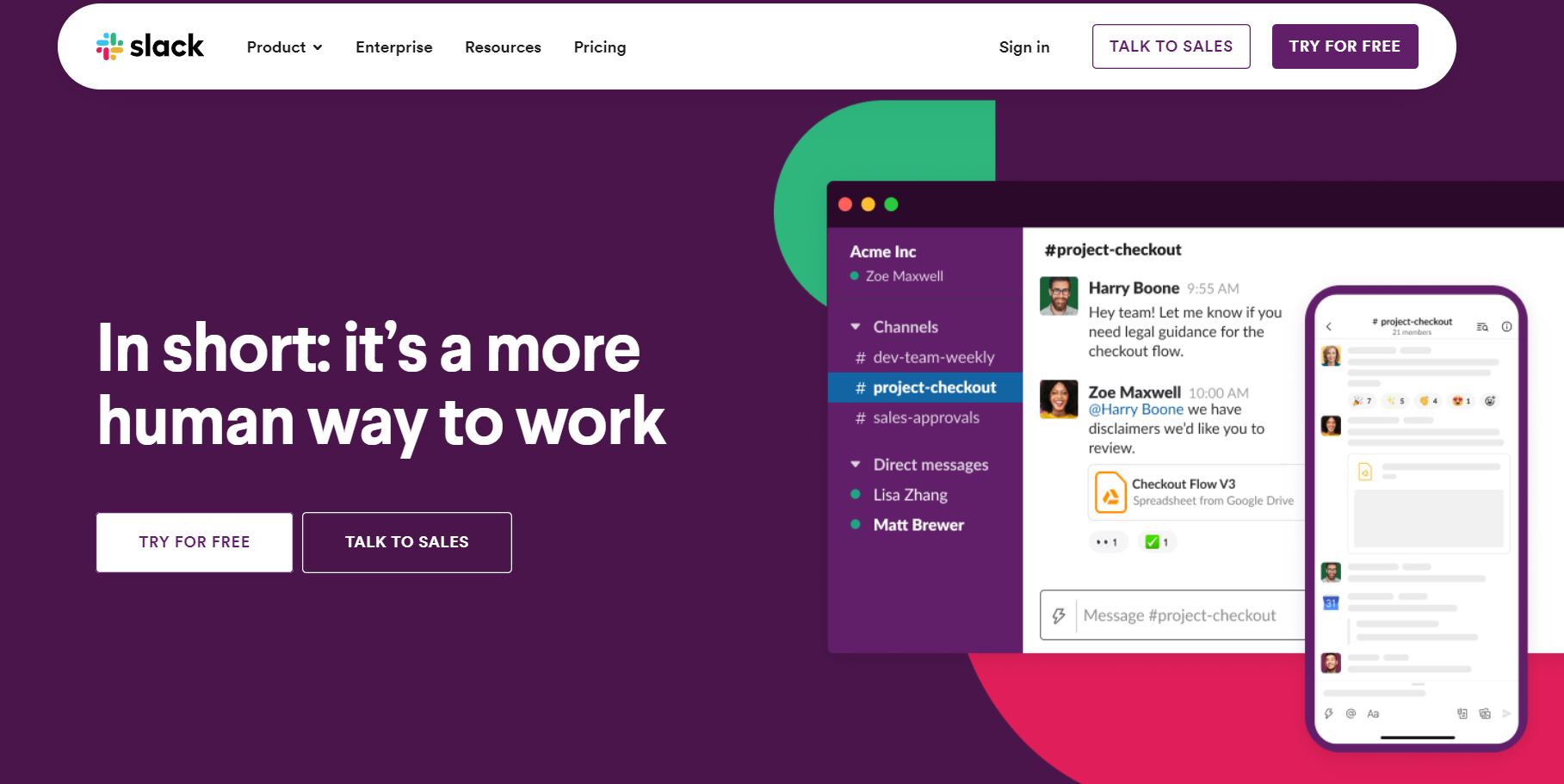
6) Ignoring Search Engine Optimization (SEO)
71% of B2B researchers begin their research with generic Google searches, and 61% of B2B decision-makers start the decision-making process with a web search.
All this is to say just how crucial it is for your B2B business website to rank on the first page of Google search. Ignoring SEO means a ton of lost traffic and leads. And besides more traffic and leads, the higher your website ranks on Google, the better your brand awareness and authority, plain and simple.
That’s because when someone finds your business organically (for relevant non-branded keywords), they’ll be able to appreciate the fact that your company is authoritative enough to be ranking so high. They’ll be more likely to enter your sales funnel because they know that if you’re ranking for relevant keywords in a competitive space, your offerings must be truly valuable.
I can’t stress this enough: focusing on SEO and inbound marketing is vital for your B2B business.
The Fix: Begin with the basics. Tackle your website’s on-page SEO, which involves optimizing:
- Page titles, meta descriptions, and URLs for the right keywords.
- Images for file size (compression) and relevant, descriptive alt text.
- Page load speed, by reducing redirects, enabling caching, minifying the code, etc. Use PageSpeed Insights to get exact recommendations on how to improve your site speed.
- Content such as your blog posts for structure, comprehensiveness, keywords, and internal links.
Next, build a backlink strategy to generate backlinks from high-quality and authoritative websites via tactics like guest posting. Quality backlinks play a huge role in achieving first-page rankings. But there’s a lot more to SEO, and it’s an ever-evolving field with Google refining its AI search algorithm each year.
Because it can be a little bit overwhelming, it’s not a bad idea to invest in a specialist SEO agency that takes care of your website’s on-page, off-page, and technical SEO needs.
Check out this 10-minute video on How to Get More Backlinks and Traffic for Your Site (The Right Way!):
Book My Free B2B Marketing Consultation
7) Not Tracking Your Metrics
As the renowned management consultant and author Peter Drucker correctly said:
“If you can’t measure it, you can’t improve it.”
This is especially true for B2B marketing success.
Metrics help you get a clear understanding of how well your campaigns are performing, whether you’re hitting your desired goals, and if you need to change something to avoid wasting your limited marketing budget on campaigns that aren’t bringing in the right leads.
The Fix: Start tracking your metrics regularly. Define your KPIs for each marketing channel (search, social, paid, etc.) and use analytics tools to stay on top of your campaigns’ performance.
For example, you can use Google Analytics to track your website’s performance goals regarding the traffic it brings, the average conversion rate, bounce rate, etc.:
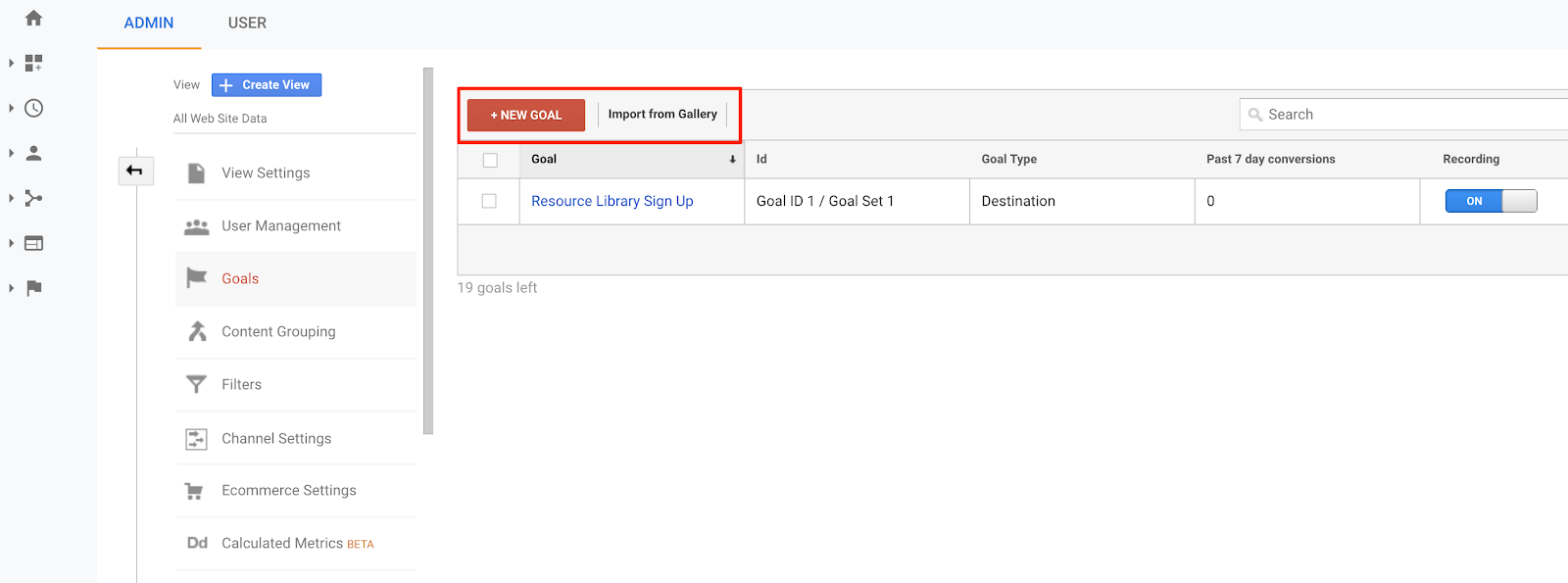
Likewise, use built-in analytics that major social media platforms like Facebook, Instagram and Twitter provide to track engagement metrics and optimize your campaigns.
This table lists the top B2B business KPIs you should be tracking:
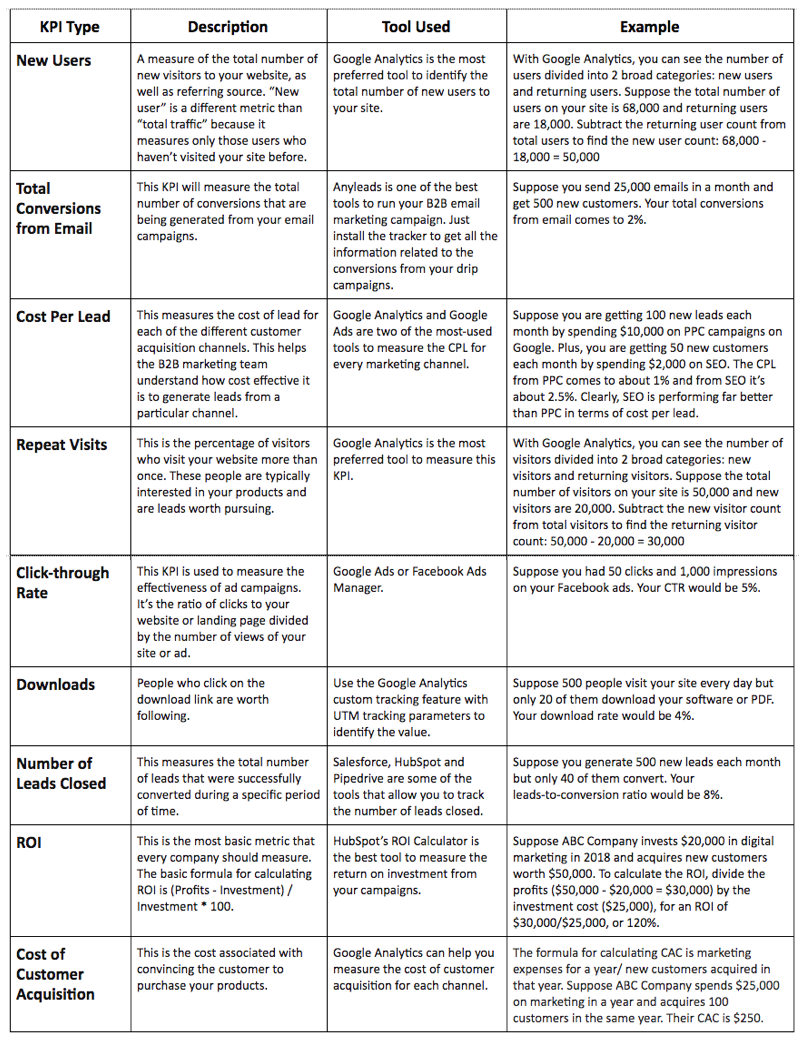
Dive Deeper:
* 9 Mission-Critical Lead Generation Metrics You Need to Track
* Everything You Need to Know About B2B Performance Metrics
* Top Marketing KPIs that Every B2B Company Needs to Track
8) Not Understanding Your Clients
B2B or B2C — regardless of who you’re marketing to, always take the time to understand your clients.
A common mistake B2B marketers make is assuming that because B2B companies acquire and work with fewer clients than B2C businesses, all these customers can be treated the same.
This is not to say that you shouldn’t provide your customers with an equal quality of service. It just means that every customer or lead is different and should be marketed to differently.
The Fix: Segment your target customer base. Your segmentation could be based on specific traits such as company size, niche, location, etc. Doing so lets you create a bespoke marketing strategy that’s way more relevant to individual segments.
You likely already have a lot of client data. Clean it up to make it more valuable.
For example, if your company provides video conferencing software, your data may be centered around industries that you’ve had the most success in, such as SaaS enterprises. After cleaning up your data, you might learn that one of your clients uses your software for its visually challenged employee program. This information opens up a whole new market for you to tap into.
Ideally, if you’re looking at enterprise clients, account-based marketing is the right way to go about B2B marketing.
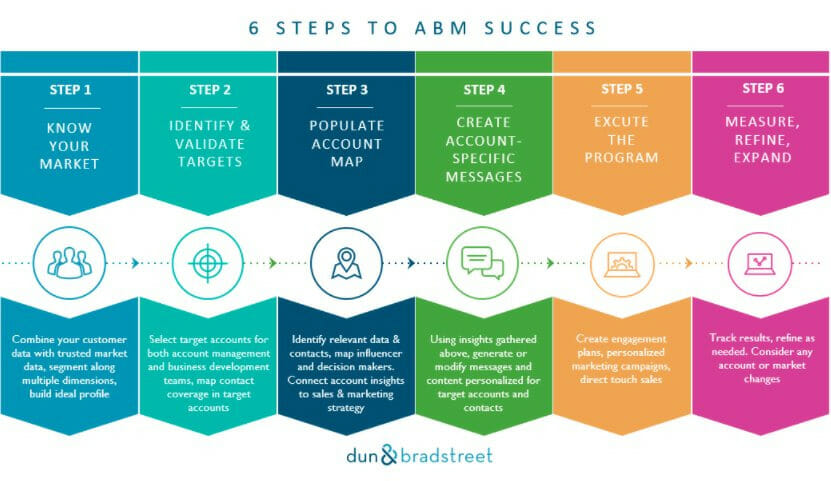
Source
9) Not Using Technology Properly
You’re well aware that to thrive as a business today, you need to go all-in on digital. But with so many great tools and software available, digital can be chaotic.
So, you need a digital strategy — something structured (yet agile) that serves as a reliable roadmap to ensure that you’re investing in the right tools and processes that help keep your business on track for greater performance.
Furthermore, it’s one thing to invest in tools and tech, and entirely another to make sure that all your team members know how to use them to their fullest capabilities.
The Fix: Before jumping in and buying the latest technology, understand how your team will use the tool to its fullest (aka digital adoption), how it will fit into your current workflow and ecosystem, and how the tool will positively impact your marketing ROI. Otherwise, you risk wasting your budget or, worse, it may even mess up your existing marketing performance.
Book My Free B2B Marketing Consultation
10) Not Cleaning Up Your Database
As touched upon a couple of points back, you already have a lot of customer and competitor data, and if you wish for it to be truly useful, you have to clean it up regularly.
Understandably, taking the time to clean your database is like eating your veggies — you know it’s a good thing to do but don’t really want to do it.
Regardless, thanks to the pace of job-hopping these days, your B2B data has a half-life of about 18 months. And after two years, only 45% of your B2B database is still valid:
Here’s what database half-life means for any given B2B prospect list:

The Fix: Customer data from surveys, interviews and research lies at the heart of all your marketing channels and campaigns. Using dirty data (that’s inaccurate, incomplete or obsolete) will do your B2B marketing more harm than good. Be sure to clean up your database software and CRM every 6-12 months, so it reflects the latest data, thus making your marketing relevant and effective.
11) Neglecting Best Practices in Organic or Paid Search
Specifically, this is a big mistake in terms of failing to understand the search intent of your audience. There are three basic types of search queries:
- Informational: Searches performed to answer questions or learn something, with keywords revolving around “how-to,” “what,” “why,” etc.
- Navigational: Searches performed to locate a specific website with branded keywords.
- Transactional: Searches performed to buy something, with keywords revolving around “buy,” “discount” or specific product names.
Also, some people have the intention to buy, not immediately but in the near future, and use Google for research. For example, they might be researching which enterprise SEO software is the “best”. These people have transactional intent but need some more time to be convinced.
The Fix: Don’t forget search intent when keyword optimizing your SEM (organic and paid) campaigns. To rank your blog content, it should contain keywords (primary, LSI, and long-tail) that satisfy the informational/educational intent of your B2B audience (C-level executives, decision-makers, market researchers):

On the other hand, your paid campaigns should be optimized for the transactional intent, with site links to drive people to different pages on your website and show clear benefits of your product. Check out Hootsuite’s (a B2B social media toolkit) PPC ad example below — see the headline, meta copy, and benefit-oriented site links.

Related Content:
* 15 Tips and Tricks to Write Better B2B SaaS Website Copy
* How to Understand Searcher Intent and Use It to Boost SEO Rankings
12) Using Social Media Poorly
The importance of social media marketing, be it B2B or B2C, needs no introduction. Social media is one of the most effective channels to connect with your potential customers, nurture leads, build brand awareness and authority, and establish meaningful relationships with existing customers.
As a business, social media enables you to converse with your customers in a more “human” and direct way. But a common and potentially off-putting mistake many B2B marketers make is seeing social media as a channel to simply broadcast their promotional messages and nothing more.
The Fix: Drop the corporate jargon (see mistake #1 above!) and opt for an informal and genuine way of social engagement. Respond to comments and queries in a conversational way, using emojis to talk like an individual with a personality (aka your brand voice).
Post helpful content that benefits your followers. Ask them what they want from you, content- or product-wise. Don’t go on and on about your product’s bells and whistles. Instead, strive to spark two-way communication and make connections rather than merely pushing your products.
Here’s an example from Hootsuite on Twitter:

13) Not Aligning Content Assets to the Sales Funnel
Life as a B2B marketer would be so much easier if your prospects converted on their first visit to your website. Alas, that’s rarely the case. In real life, your prospects bounce around multiple content assets on several sites before moving from one stage of the sales funnel to the next.
So if you’re not aligning your content to the sales funnel, you’re essentially creating friction in lead generation, nurturing, and conversion.
The Fix: Audit your content and try to map content assets to specific stages of the funnel:

For example, use that case study that’s rarely downloaded as an intro to a comprehensive blog post. Share customer stories in your B2B email newsletter to nudge subscribers to consider purchasing. Use content upgrades (such as a PDF checklist, e-book, etc.) on your blog to turn visitors into leads:

The idea is to leverage and repurpose your content assets in a way that facilitates a smooth transition from one stage of the sales funnel to the next.
14) Not Aligning Sales and Marketing
While each has different intermediate purposes, you could almost say that sales and marketing are two sides of the same coin, as the end goal is to increase your revenue and retention:

So if your sales and marketing teams are working in silos, rather than synergistically, this is another big mistake that you’ll need to fix.
The Fix: Here are eight steps you can take to align your sales and marketing efforts:
- Establish a common customer persona
- Build a single, unified customer journey
- Define what a marketing qualified lead (MQL) is and when to hand it over to sales
- Measure the same high-level KPIs (revenue, CLV, CAC, etc.)
- Gather customer feedback to revamp marketing strategy and sales messaging
- Ensure that you have consistent messaging across all touchpoints of the funnel
- Let the marketing team provide the assets for every sales stage
- Once a customer is acquired, marketing and sales must team up to maximize retention
15) Ignoring AI-Driven Personalization
With AI tools like ChatGPT, Jasper, and Writesonic becoming mainstream, personalization is no longer optional — it’s expected. B2B buyers now anticipate content and experiences that are tailored to their needs, interests, and actions. If you’re not using AI-driven personalization, you risk losing relevance with your audience.
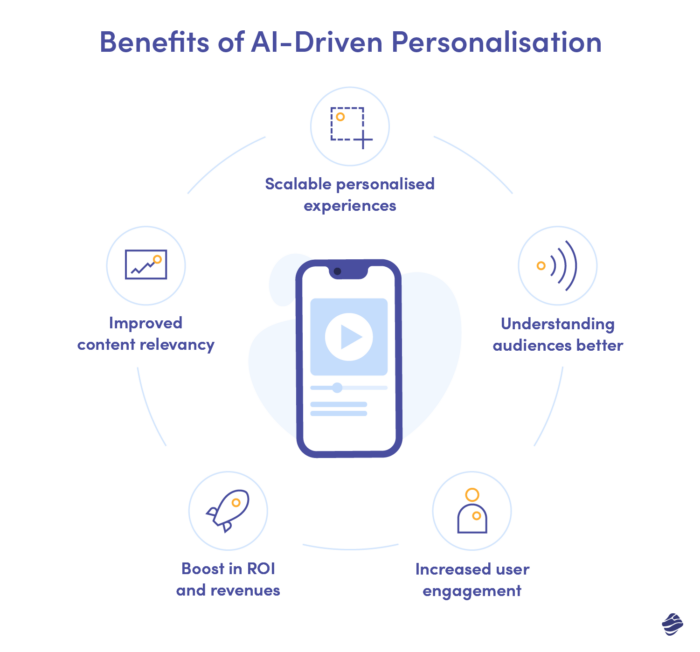
Source: Miquido
The Fix:
Leverage AI tools to analyze user behavior and automatically deliver personalized content, such as email recommendations, blog suggestions, and custom product pages. But don’t rely on AI alone. Human oversight is essential to maintain brand voice and prevent robotic-sounding messaging. Balance AI-driven automation with human touchpoints for optimal customer experience.
16) Failing to Adapt to a Privacy-First World
With data privacy regulations like GDPR, CCPA, and Google’s phase-out of third-party cookies, relying on third-party data is a ticking time bomb. If your marketing strategy depends on invasive tracking methods, you’re headed for trouble in 2025.
The Fix:
Shift to first-party data collection by encouraging users to opt into newsletters, gated content, and surveys. Use zero-party data (data customers willingly share) to create more personalized experiences. Leverage contextual advertising instead of behavior-based targeting and ensure compliance with privacy regulations to maintain customer trust.
17) Overlooking the Power of AI Agents for Lead Nurturing
AI-powered agents and chatbots have moved beyond answering basic questions. In 2025, they will qualify leads, schedule meetings, and nurture prospects automatically. If you’re still relying solely on human sales teams for lead nurturing, you’re missing out on a massive efficiency boost.
For example, AirOps is a tool we use almost every day here at Single Grain. It’s fantastic at automating specific workflows and SOPs to cut down on the time it takes to execute specific strategies (especially for lead nurturing).

The Fix:
Use AI sales agents (like Drift or HubSpot Chatbots) to engage website visitors, pre-qualify leads, and route them to the appropriate sales reps. AI agents can also manage follow-up emails and ensure that no lead is left behind. This frees up your human sales team to focus on high-value conversations with sales-ready prospects. To take it a step further, you can have tools like AirOps aid in the ideation and creation process of marketing content.
18) Ignoring Voice Search Optimization
Voice search is no longer a consumer-only trend — it’s creeping into B2B buying journeys. Executives and procurement teams use voice-enabled devices like Alexa, Google Assistant, and Siri for quick research. If your site isn’t optimized for voice search, you could lose valuable organic traffic.
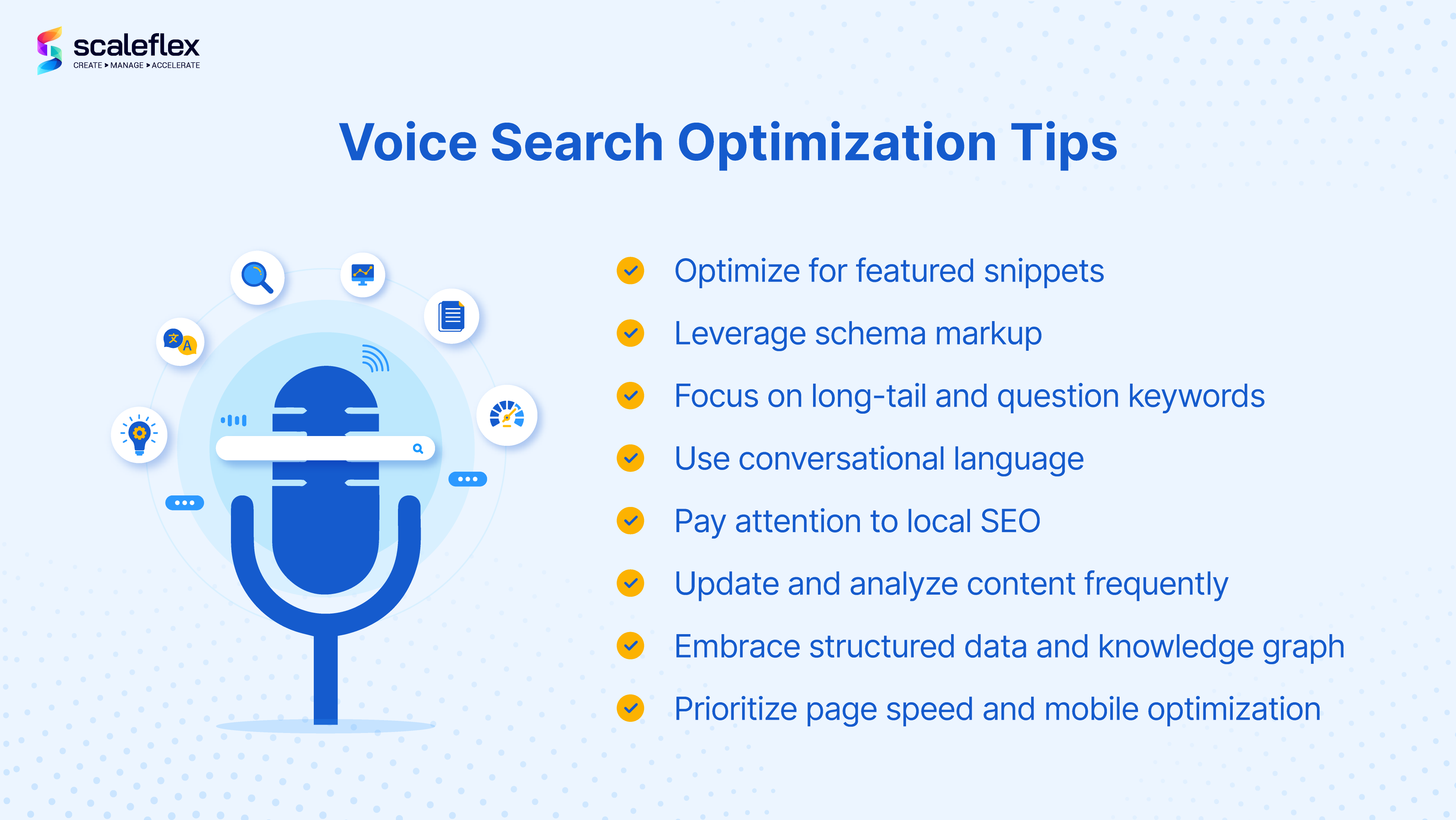
Source: Scaleflex
The Fix:
Optimize for voice search by incorporating long-tail, question-based keywords (like “How to choose a B2B CRM”) in your content. Create FAQ pages that target conversational queries and use schema markup to make it easy for search engines to understand your content. Ensure that your content is mobile-friendly since voice searches are often performed on mobile devices.
19) Neglecting Immersive Content (AR/VR) Opportunities
As augmented reality (AR) and virtual reality (VR) technology advances, B2B companies are using immersive content to differentiate themselves. If your competitors are giving prospects virtual product tours or interactive demos while you’re still relying on PDFs and slide decks, you’ll get left behind.
The Fix:
Leverage AR/VR to create engaging product demos, 3D walkthroughs, and immersive event experiences. Showcase your products in an interactive format that allows buyers to “experience” them before purchase. This can be done with AR-enabled apps, 360-degree product videos, or VR experiences during industry events or sales calls.
20) Underestimating the Importance of ESG and Sustainability in B2B Marketing
Buyers in 2025 expect B2B vendors to prioritize Environmental, Social, and Governance (ESG) principles. If you fail to highlight your ESG commitments, you risk being overlooked during the vendor selection process.
The Fix:
Incorporate your ESG initiatives into your B2B marketing strategy. Highlight your commitment to sustainability and social responsibility in your website, RFPs (Request for Proposals), and case studies. Use certifications, data, and success stories to prove your ESG impact, and make it a key differentiator in competitive bids.
21) Neglecting Predictive Analytics for Data-Driven Decisions
Gut-feel decision-making is a thing of the past. B2B companies that fail to use predictive analytics in 2025 will struggle to keep up. Without predictive insights, you’ll miss out on key opportunities to optimize campaigns, predict lead behavior, and maximize ROI.
:max_bytes(150000):strip_icc():format(webp)/predictive-analytics.asp-final-fc908743618a4f9093dfdd1fa6e9815a.png)
Source: Investopedia
The Fix:
Invest in predictive analytics platforms that provide real-time insights. Tools like Google Analytics 4, Looker, and Tableau enable you to identify trends, predict lead behavior, and make agile marketing decisions. Use predictive models to forecast campaign performance and allocate marketing budgets more effectively.
22) Failing to Automate ABM for High-Ticket Prospects
Account-Based Marketing (ABM) is essential for targeting high-ticket prospects, but many B2B companies still manage ABM campaigns manually. This slow, manual process can result in missed opportunities, delayed outreach, and limited scalability. If you’re still relying on spreadsheets and manual ad placements, your competitors are likely running more agile ABM campaigns at scale.
The Fix:
Automate your ABM strategy with tools like Karrot ABM, which enables brands to quickly deploy ABM ads at scale on LinkedIn. Karrot ABM allows you to target specific companies, decision-makers, and buyer personas with precision. When you automate your ABM workflows, you can:
- Launch personalized LinkedIn ad campaigns at scale.
- Quickly adjust messaging and creative based on real-time campaign performance.
- Target high-value prospects with tailored ad content specific to their buyer journey.
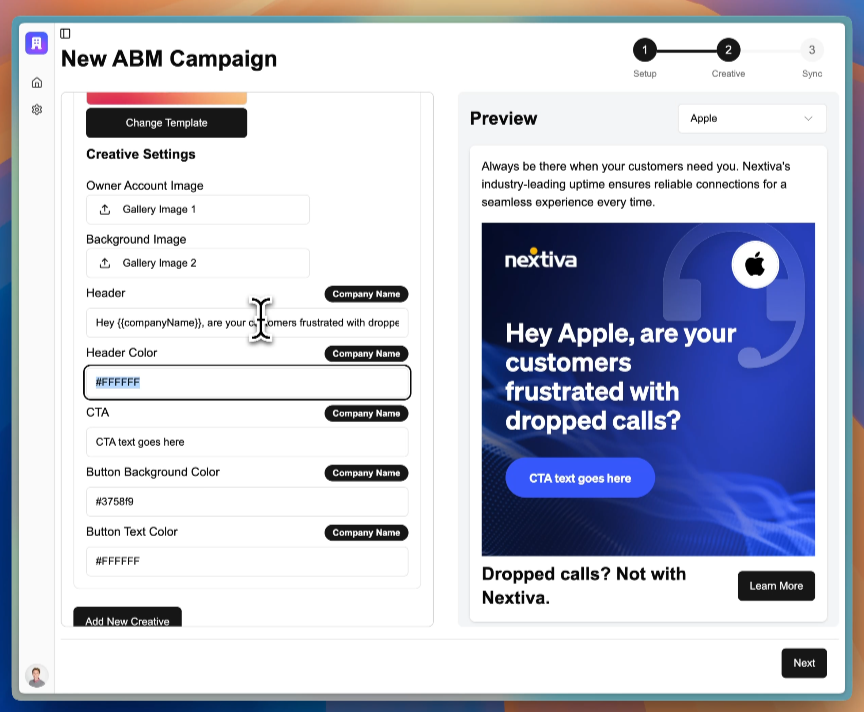
Automation speeds up the time to market, eliminates manual errors, and allows for hyper-personalized ad delivery. Instead of running one campaign at a time, you can run multiple, highly-targeted ABM campaigns simultaneously, increasing your chances of capturing high-value leads.
Book My Free B2B Marketing Consultation
Conclusion: Make no Mistake
Working on a tight marketing budget and in a competitive landscape, mistakes in your B2B marketing strategy can have a serious impact on your efforts to build a steady stream of leads and surpass the competition.
So make it a point to avoid these top B2B marketing mistakes in your future campaigns so that you can see bigger and better results!
If you’re ready to level up your B2B marketing, Single Grain’s B2B experts can help!👇
Frequently Asked Questions About B2B Marketing Mistakes
-
What is the most common mistake B2B marketers make when creating website content?
The most common mistake is focusing too much on the company itself rather than the customer. Many B2B websites highlight product features and accolades rather than addressing customer pain points, needs, and benefits. Shifting the focus to how the product or service solves customer problems can significantly improve engagement and conversions.
-
Why is it important to align sales and marketing in B2B companies?
Aligning sales and marketing ensures a seamless customer journey, from lead generation to conversion. When these teams work in silos, they may have conflicting messages, disjointed handoffs, and missed opportunities. Alignment helps define marketing-qualified leads (MQLs), unify messaging, and increase revenue and customer retention rates.
-
How can B2B companies improve their call-to-action (CTA) effectiveness?
B2B companies can improve CTAs by making them clear, action-oriented, and benefit-focused. Use compelling language like “Get My Free Guide” or “Start My Free Trial” instead of generic phrases like “Click Here.” Position CTAs prominently on the page, use contrasting colors, and ensure there is sufficient white space around them for visibility.
-
What is responsive design, and why does it matter for B2B websites?
Responsive design ensures that a website adjusts to fit any screen size or device, such as desktops, tablets, and smartphones. Since over 90% of global internet usage comes from mobile devices, a responsive website improves user experience, boosts mobile SEO rankings, and increases visitor engagement, making it essential for B2B success.
-
How often should B2B companies clean their customer databases?
B2B companies should clean their customer databases every 6 to 12 months. Data decays rapidly due to job changes, mergers, and shifts in business needs. Regular data cleaning ensures better personalization, improved email deliverability, and more effective sales outreach, ultimately driving higher conversions.
-
What are some signs that a B2B company needs to improve its SEO strategy?
Key signs include low organic traffic, poor search engine rankings for key industry terms, high bounce rates, and a lack of inbound leads. If competitors consistently outrank your site, it may be time to prioritize on-page SEO, optimize for mobile-first indexing, and implement a backlink strategy to boost domain authority.
Related Video
For more insights and lessons about marketing, check out our Marketing School podcast on YouTube.
Additional content contributed by Sam Pak.






